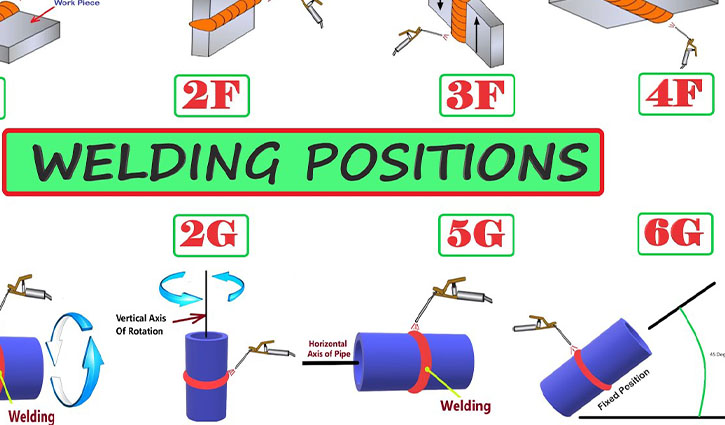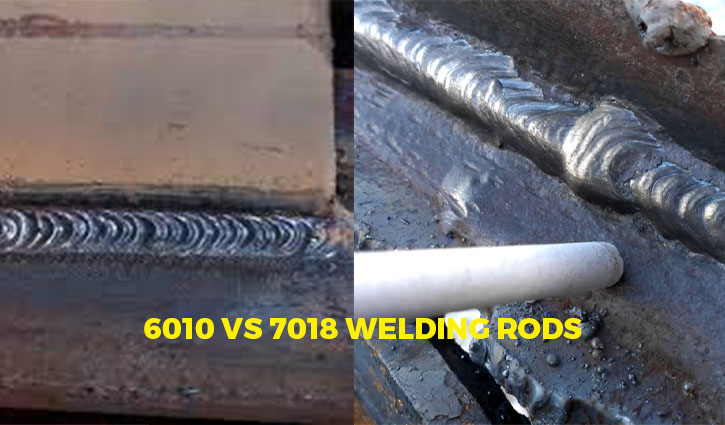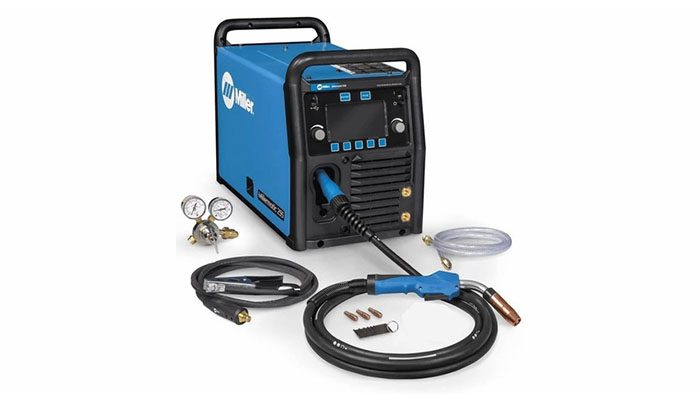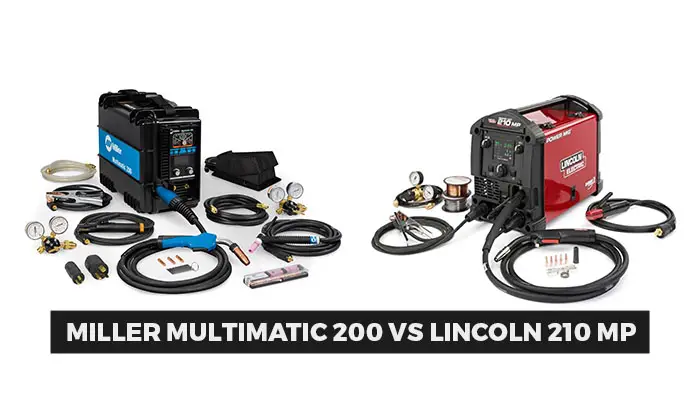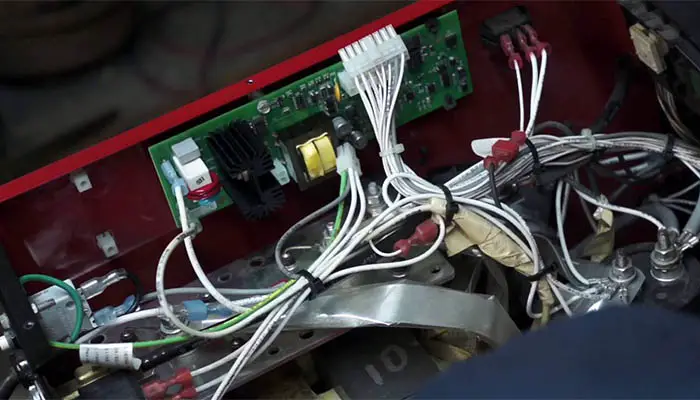Argon Vs Co2 Welding: A Complete Comparison
When it comes to welding, Argon gas is typically used as the welding gas because it is a non-toxic, inert gas.
However, Argon is not the only gas that can be used for welding. CO2 is also a common welding gas. In fact, it is a more powerful gas and it has a higher temperature tolerance than argon.
But which gas is better overall? What’s the difference between them? These are some of the questions we’ll get answered in this article.
Table of Contents
Comparison Table Between Argon and CO2 Welding
| Welding Gases | Argon | CO2 |
| Gas Type | Odourless, Non-toxic, Inert | Inert, Non-toxic, and Incombustible |
| Penetration | Deep | Medium |
| Cylinder Color | Blue | Grey |
| Cost | Expensive | Less expensive |
| Temperature tolerance | Low | High |
| Other specifications | Left less spatter | Good amount of spatter |
What is Argon Gas for Welding
Argon is a more Non-toxic and inert gas, which means it produces much heat when used in welding. It has a better protection rate from ultraviolet radiation and is highly recommended for welding aluminum.
Argon is not very reactive to react with anything except some metals. However, Argon is commonly used in arc welding processes.
Pros-Cons of Argon Welding gas
Let’s have a quick look at the pros-cons of Argon.
What is CO2 Gas for Welding
CO2 is an Inert, Non-toxic, and Incombustible gas. It is reactive enough to react with metals.
CO2 gas is better for steel, it heats up faster, penetrates deeper into the metal, and has more lubricant properties. CO2 also reduces porosity in the weld joints but can produce a brittle weld joint that can be difficult to clean up during grinding after welding.
Pros-Cons of CO2 Welding gas
Here are some important pros and cons of CO2 gas welding that you need to know.
Read More: CO2 Welding Process: A Step-By-Step Guideline
Similarities Between Argon and CO2 welding
There are a few similarities between Argon and CO2 welding. Firstly, both gases are used in welding. Argon is a noble gas, while CO2 is a carbon dioxide gas.
Secondly, both are considered inert gases, meaning that they do not react with other elements. And Thirdly, both gases are used in welding because they are good heat transfer agents.
Finally, both gases are used to weld metals. Argon and CO2 gas can be used together as well.
Difference Between Argon and CO2 welding
Argon is a common welding gas because it is inexpensive and easy to find, making it a good choice for a beginner.
CO2 also has the advantage of being a gas that is easily released, making it ideal for welding in areas where there is a potential for sparks.
There are more significant differences between Argon and CO2 gases for welding. Let’s have a quick look at them.
Heat Consumption:
Argon gas is a non-toxic and inert gas. While welding with argon gas the material gets hotter, on the other hand, CO2 gas can cool down quickly. So, the heat consumption of CO2 is greater than Argon.
Cost Effectiveness:
The CO2 gas is less expensive than Argon. While welding argon gas costs more than CO2 gas. Approximately Argon is 3 times more expensive than CO2.
Argon or CO2 welding gas: Which one should you choose?
When it comes to welding with Argon or CO2, there is no right or wrong answer. Ultimately, it depends on what you are looking for in a welding gas.
Argon is a less expensive gas, but it does not produce as much heat as CO2. For this reason, it is often used for beginning welders. CO2, on the other hand, is more expensive but it provides more heat and is better for welding metals that are difficult to weld with other gases.
Ultimately, the choice of welding gas is a personal one. If you are just at the beginner level, Argon may be a good choice because it is less expensive.
CO2 vs Argon CO2 mix for MIG welding
Using CO2 and Argon CO2 mix for MIG welding is quite familiar to welders. Argon CO2 mix produces easier and neater welds among other gases, but a MIG welder can be used with CO2 if it is put up with an increased spatter and a less steady arc.
When it comes to welding with CO2, it produces very little heat. This is great for dealing with delicate or difficult-to-hit metals. But If you make a mistake while welding with CO2, you can end up ruining the joint.
The MIG welding using 80% Argon, and 20% CO2 shielding gas results in very stable and controllable. While, 100% CO2 gas weld makes the arc feel much less stable, and the weld left a good amount of spatter.
Read More: Gas Welding Vs Arc Welding: A Complete Comparison, Difference
Welding with CO2 vs Argon
CO2 is a reactive gas in welding. It’s less expensive than welding gases and it can be used without inert gas. So, welding with CO2 gas will be less expensive and It will cool down the arc quickly. But it will cause much spatter after welding.
Argon is a common welding gas that produces a deep penetration, which offers a neat and clean joint weld. If argon is being used alone, it can produce a good weld. However, It is expensive and hotter than CO2.
While there are many differences between CO2 and Argon gas welding, they can be used together as well.
What is the best mix of CO2 and Argon for MIG Welding
Having many differences, CO2 and Argon gas can be used in MIG welding. And it can perform really well having less spatter and clean weld.
There are many mixtures of CO2 and Argon gas for welding purposes. They are:
- C2 means 98% Argon and 2% CO2
- C25 means 25% CO2 and 75% Argon
- 100% CO2
- 100% Argon
The CO2 gas is being used to weld stainless steel. CO2 reacts with the stainless steel in the heat of the arc, resulting in oxidation and reduction in corrosion resistance.
Among these MIG gases, the C25 is the most used welding gas. It can produce a very narrow weld profile.
Can I use CO2 instead of Argon?
CO2 is the most common reactive gas in MIG welding., and it is also less expensive, making it a good choice when your main priority is the material cost.
100% CO2 can provide very deep weld penetration, which is useful for welding thick material. However, CO2 also produces a less stable arc and more spatters. But it can produce less spatter when mixed with other gases.
Hence, Argon gas is typically used as the welding gas because it is a noble gas. But Argon is expensive gas. And you might get a weld which might not be attractive.
So, If weld quality and appearance are important, CO2 gas may be appropriate.
Frequently Asked Questions
The most common mixture of CO2 and Argon gas for welding is the C25.
CO2 is the least expensive of the shielding gases.
Yes, 100% Argon gas can be used in MIG weld steel.
Verdict
When it comes to welding with CO2, the choice may come down to a matter of price and convenience. Argon can be more expensive, but it offers some advantages over CO2 when it comes to welding with high-quality metals.
Argon is better at welding resistant materials, like titanium, and it can handle higher temperatures without distortion.

